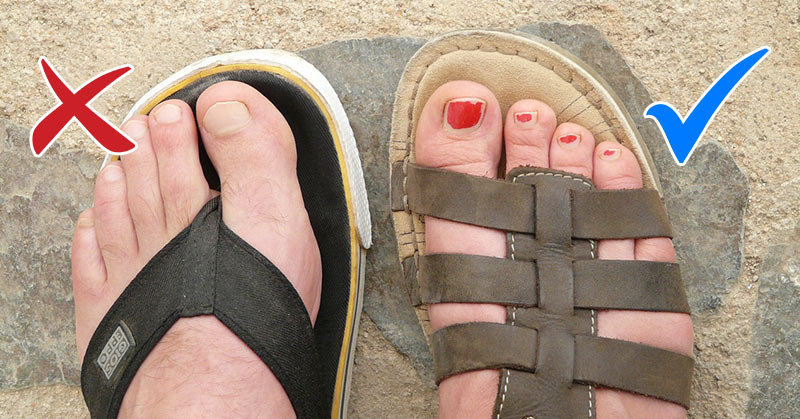Many people find flip flops easy, affordable, and even stylish. Just slip into them and you’re flip-flopping your way to the store, friend’s house, beach, or wherever you need to get to. However, there are problems that come with the abrupt change from well-supported feet to open-toed flip flops, and if you already have a health condition, flip flops might make it worse.
5 Health Conditions That Flip Flops Make Worse
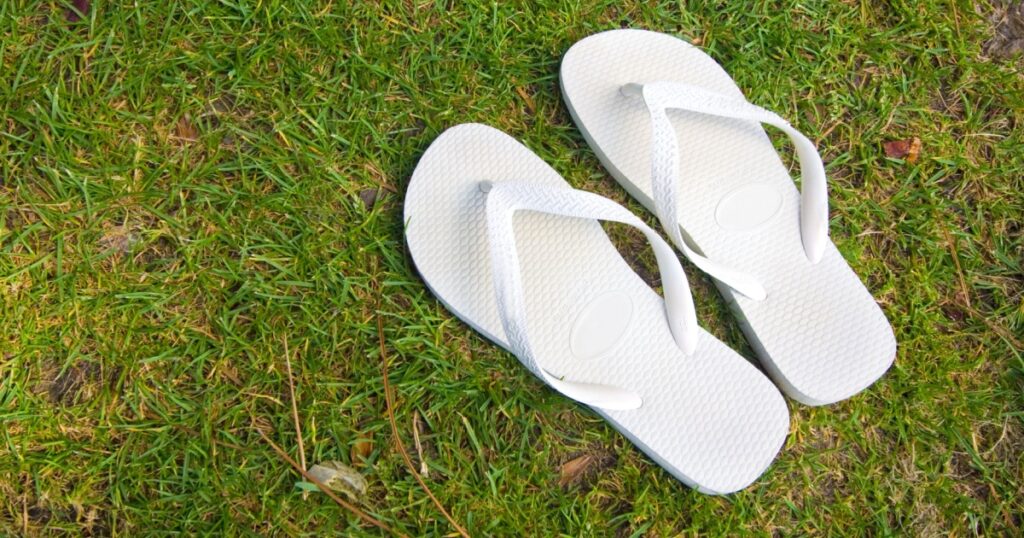
That’s right, summer’s not all sunshine and daisies. Here’s how cheap flip flops can aggravate your condition.
Back Pain
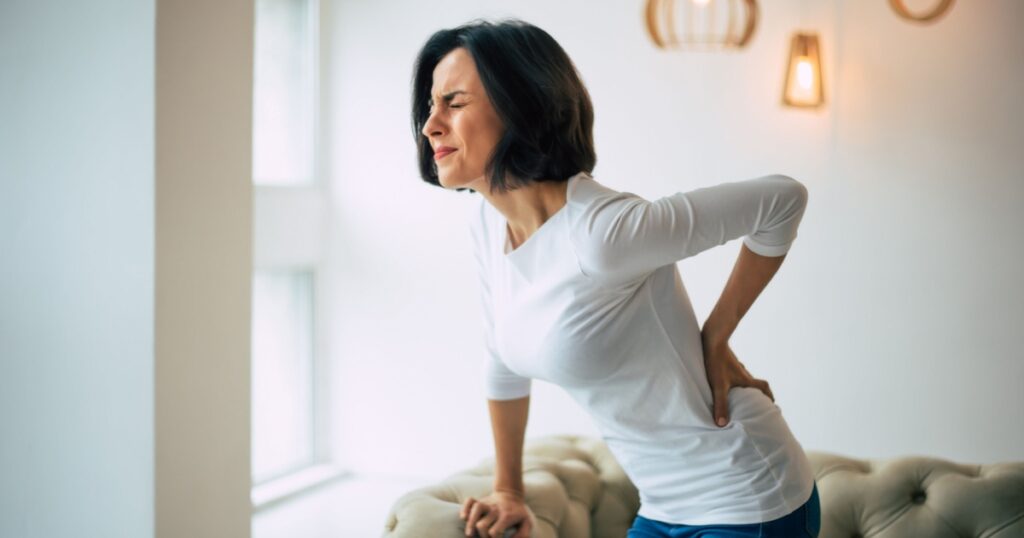
Researchers discovered that footwear that doesn’t support your foot can lead to back pain. The researchers recorded the participants walking in either running shoes or flip flops, and observed the effects each type of footwear had on them. Flip-flop wearers took shorter steps and did not let their toes up when their legs were in the swing phase because they were trying to grip their flip flops. The lead researcher said that feet struggle in flip flops and that kind of pain can extend upwards the body, towards the thighs and back. (7)
Read More: What It Means If You See Someone Wearing These Shoes
Plantar Fasciitis
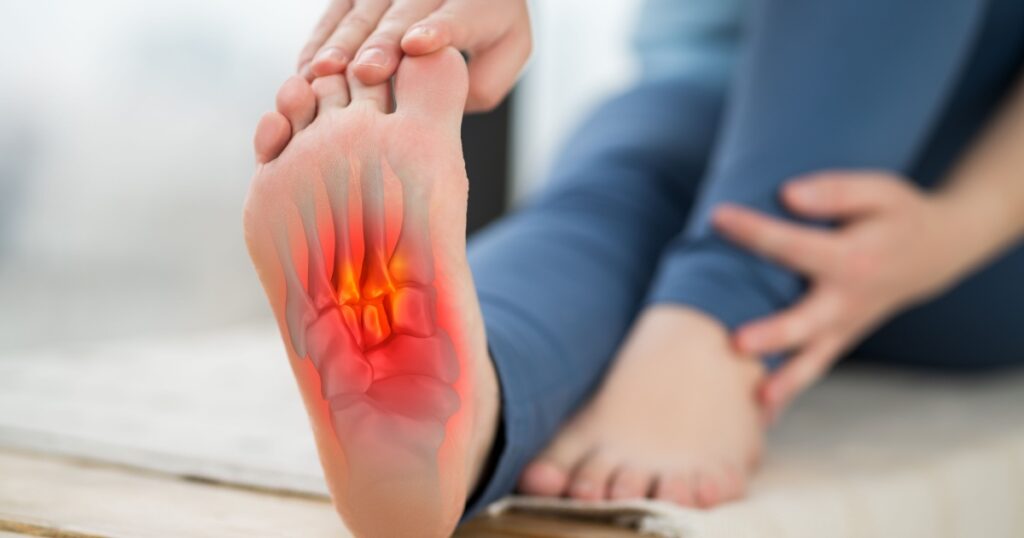
The plantar fascia is a tissue that connects your toes and your heel bone and provides support to your feet. Plantar fasciitis occurs when that tissue becomes inflamed and gets swollen, weak, and irritated. (5) Flip-flops can aggravate the pain because studies show that they can flatten your arch and make it difficult to bend, force your big foot to bend backward and make your ankles bend inwards instead of standing straight and the soles of your feet bend outwards instead of side-to-side when you walk. (2)
Achilles Tendon Problems
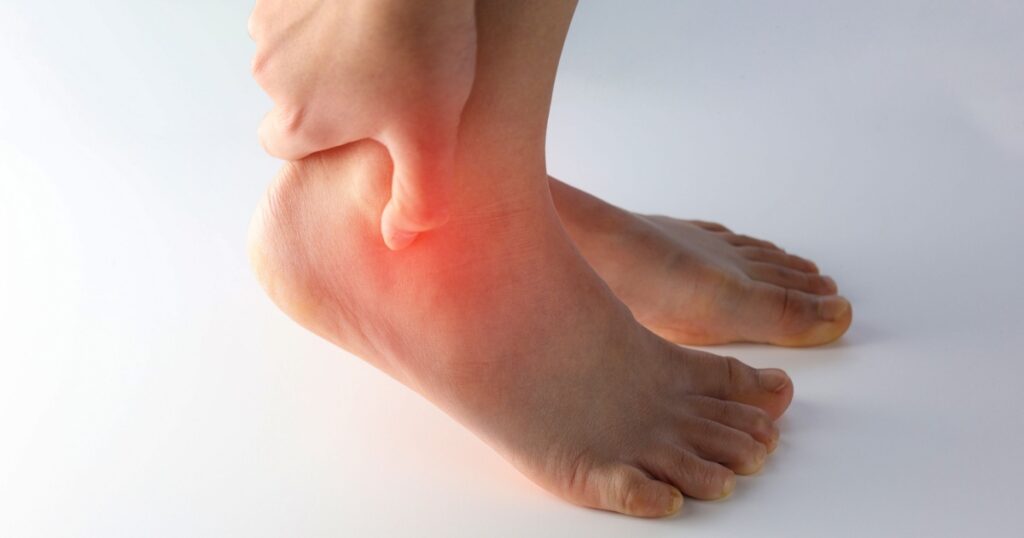
Your Achilles tendon connects the heel of your foot to your calf muscle and it’s the largest tendon in your body. Problems with your Achilles tendon may arise if your feet are flat, meaning that your arches are collapsed and almost or completely touch the ground. Flip flops will only worsen the pain if your heels are unsupported because they put extra pressure and stress on the tendon. (1)
Bunions
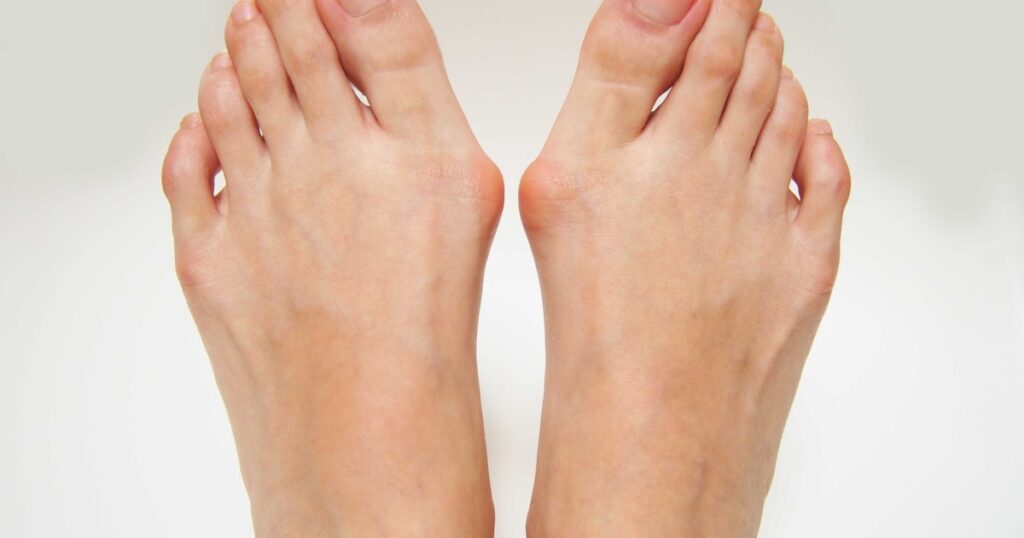
The lack of arch support can also lead to bunions or bunionettes (which form on the little toe side). Both are caused by shifting ligaments and small bones in your foot from wearing flip flops often. Flip flops force your toes to curl while walking since there isn’t much of a mechanism to keep your feet on them. Over time, this can lead to hammertoes, a condition in which your toes stay in a curled position. This can cause hardened callouses on the tops of your toes that are aggravated when wearing closed-toe shoes.
Read More: 4-Year-Old Catches Sepsis While Trying On New Shoes without Socks
Diabetes

Diabetes can sometimes cause nerve damage or poor blood flow in your feet, making it difficult to realize that you’ve been hurt. Flip flops leave your feet exposed and vulnerable and even an insignificant injury, such as a small cut, can turn into an infection or ulcer if left untreated. The straps can also injure the skin between the toes. (3)
Better Alternatives To Flip Flops
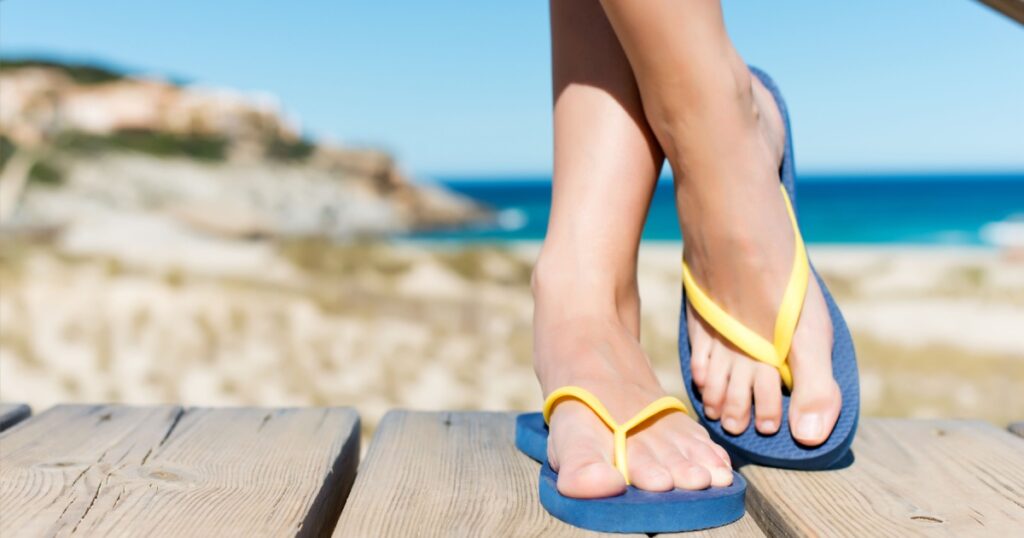
Regardless of brand or type of shoe, you should look for shoes that have good heel and arch support, and a cushioned sole. As a general rule, don’t buy extremely cheap flip flops. They are affordable, but the awful harm they can cause will make you pay later. If you have to, wear your flip flops in moderation. It’s okay to wear them at the beach or the pool or around the house, but don’t wear them to walk long distances or when you’re driving.
You Can Try
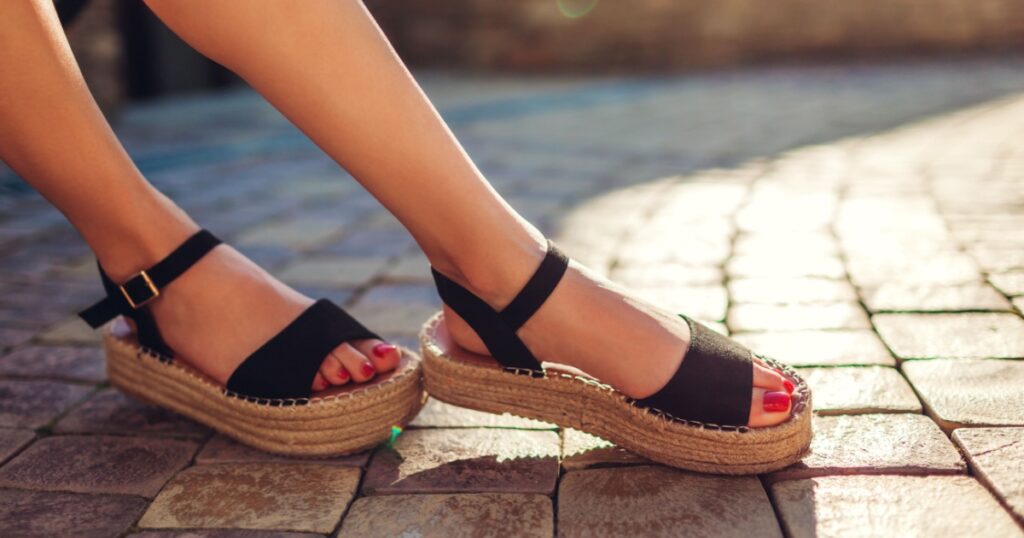
- Higher quality flip flops are less likely to make your feet sweat and won’t retain as much sweat and bacteria as the cheap ones do.
- Orthopedic flip flops can prevent pronation, the tendency of your ankle to bend inward and your foot to bend outward when you run, walk, or stand.
- Fitflop sandals have a wide strap that keeps your ankle secure and also has a thick, comfortable, and cushioning multi-density midsole that prevents pronation. (6)
- Crocs might not be the most fashionable choice when you want to look your best, but they are lightweight, have decent interior support, and the heel strap can keep your foot secure when you need it. However, some podiatrists believe they’re not good or safe for all-day use. According to podiatrist Dr. Megan Leahy, “These shoes do not adequately secure the heel. When the heel is unstable, toes tend to grip which can lead to tendinitis, worsening of toe deformities, nail problems, corns, and calluses. The same thing can happen with flip flops or any backless shoes as the heel is not secured.” (8)
- Sports sandals embrace your foot like running shoes and are better for the summer when you should let your feet breathe. Sport sandals have comfortable straps and soles that give you arch support.
- Instead of getting another type of shoe, try wearing heel cups or gel shoe inserts with your flip flops. These can add support and enhance the thin, flat surface of your flip flops.
Read More: Why You Should Never Wear Your Shoes Inside the House
Sources
- (1) Achilles Tendon Problems – Topic Overview. (n.d.) In WebMD.
- (2) Chard, A., Greene, A., Hunt, A., Vanwanseele, B., & Smith, R. (2013). Effect of thong style flip-flops on children’s barefoot walking and jogging kinematics. Journal of Foot and Ankle Research, 6(8).
- (3) Fields, L. (2015, December 21). Diabetes and Wounds: Caring for Sores.
- (4) Kurup, H. V., Clark, C. I. M., & Dega, R. K. (2012). Footwear and orthopaedics. Foot and Ankle Surgery, 18(2), 79-83.
- (5) Plantar Fasciitis – Topic Overview. (n.d.) In WebMD.
- (6) Price, C., Andrejevas, V., Findlow, A. H., Graham-Smith, P., & Jones, R. (2014). Does flip-flop style footwear modify ankle biomechanics and foot loading patterns? Journal of Foot and Ankle Research, 7:40
- (7) Shroyer, J. F., & Weimar, W. H. (2010). Comparative analysis of human gait while wearing thong-style flip-flops versus sneakers. Journal of the American Podiatric Medical Association, 100(4), 251-257.
